Jury
CHRIS DOWNEY
.jpeg)
In 2008 a brain surgery left architect Chris Downey, then 45 years old, completely blind. His work now draws from his new perspective -- creating more effective and enriching environments for the blind and sighted as well. Through his San Francisco, California, USA firm, Chris Downey Architecture for the Blind, he specializes in projects for or significant to the blind and visually impaired. Chris has been featured in national and international media stories and writes and speaks about Universal Design, disability and sight loss relative to the built environment.
Chris is a Lecturer and teaches a class on accessibility and Universal Design at the University of California, Berkeley College of Environmental Design. Through his practice and teaching, Chris explores not only access to space and information, but also access to "delight" in architecture whether it is seen or un-seen. (See a complete biographical question and answer interview with Downey here.)
DEEPAK K.C
.jpg)
Mr. Deepak K.C (Khatri Chhetri) is widely acknowledged as the first wheelchair-using architect in Nepal. He is an active leader in the disability movement and a founding member of Independent Living Center Kathmandu, which leads Nepal’s popular effort for the implementation of the United Nations Convention on the Rights of Disabled Persons in the country. Currently, he is working with the Nepal’s Women, Children, and Social Welfare Ministry as leader of core technical committee for preparation of accessibility guidelines, the first of its kind in Nepal. He is a registered member of the Society of Nepalese Architects and the Nepal Engineering Council.
Deepak is closely associated with the associated with Institute for Human Centered Design (IHCD) as member of this international network of designers with disabilities. In addition, he is an active member of Kokorozashi IL Network, a group formed by Japanese disabled leaders for promotion of the Independent Living Movement in the Asian region. Deepak also volunteers as a country representative of the Global Alliance on Accessible Technologies and Environments (GAATES), a leading international organization dedicated to the promotion of accessibility of the built and virtual environments.
In 2006, Deepak K.C. was awarded a one-year Leadership Training for Persons with Disabilities fellowship in Japan by the Duskin AINOWA foundation, a Japanese corporate effort. This program, which is operated by the Japanese Society for Rehabilitation of Persons with Disabilities (JSRPD), enables participants to study Universal Design concepts from well-known Japanese leaders in the field.
RACHNA KHARE
.JPG) Architect and Professor, Dr. Rachna Khare has lectured and published extensively on the subject of Inclusive Design worldwide. Her book, Designing Inclusive Educational Spaces for Autism (2010), was published by the Institute of Human Centered Design, Boston, USA . In addition, she is one of the authors of Universal Design India Principles (2011). She has also edited special issues of the internationally journals, SPANDREL on “Social Sustenance” in 2012, and ABACUS on “Architecture for All” in 2007. Architect and Professor, Dr. Rachna Khare has lectured and published extensively on the subject of Inclusive Design worldwide. Her book, Designing Inclusive Educational Spaces for Autism (2010), was published by the Institute of Human Centered Design, Boston, USA . In addition, she is one of the authors of Universal Design India Principles (2011). She has also edited special issues of the internationally journals, SPANDREL on “Social Sustenance” in 2012, and ABACUS on “Architecture for All” in 2007.
Aside from teaching in her current position at the School of Planning and Architecture, Bhopal, Madhya Pradesh, India, Dr. Khare also coordinates the Centre for Human Centric Research (CHCR). The Centre works to build a body of knowledge that responds to the design needs of diverse human population otherwise marginalized in past design practices. Prior to this she was a Senior Research Fellow holding the Jamsetji Tata Universal Design Research Chair at the National Institute of Design, Ahmedabad, and taught at Birla Institute of Technology, Mesra.
This year, Rachna is also coordinating the India National School Design Competition 2012, “Universal Usability in World Heritage.” The competition focuses on Universal Design for Exploring World Heritage Sites in India in collaboration with Archaeological Survey of India and UNESCO. Khare is an activist and founding member of the Movement for Intervention, Training and Rehabilitation of Children with Autism’ (MITRA), an NGO. She is a recipient of a Fulbright Fellowship and was affiliated with the Georgia Institute of Technology, Atlanta, USA during her Ph.D.
CAMILLA RYHL
.JPG)
Dr. Camilla Ryhl is a Professor at the Bergen School of Architecture in Bergen, Norway and teaches inclusive design at numerous Scandinavian architecture schools. Her Ph.D. dissertation, "A House for the Senses," is a study on housing design and architectural quality for people with sensory disabilities. She has continued to specialize in sensory aspects of Universal Design as a Postdoctoral Fellow, researching and teaching at UC Berkeley (2003-2006), where she was also a Fulbright Scholar (2000-2001).
In addition to her teaching, Dr. Ryhl is Senior Researcher at the Danish Building Research Institute, Aalborg University, (Aalborg, Denmark) where she heads the Institute’s research in the field of accessibility and inclusive design. Additionally, she is a founding member of the Nordic Network on Architectural Research in Design-for-All. Camilla holds a Masters and Ph.D. in Architecture degree from the Royal Danish Academy of Fine Arts in Copenhagen, Denmark (2003).
|
|
|
 Like everyone else, this worker in Mexico needs transportation to his job. Public transport needs to be accessible for persons with mobility, sensory, and cognitive disabilities.  Persons with disabilities around the world are promoting transport systems that provide mobility for everyone. Mexican disability advocates are shown meeting with local transit officials to promote accessible transport. AEI has published guides to assist planners and advocates of inclusive transportation.  An accessible travel chain begins with safe streets and sidewalks. This street in Foshan, China, has separate rights-of-way for pedestrians, human-powered vehicles, and motor-powered vehicles.  Disability advisors at Rio de Janeiro’s Independent Living Center monitored access features for this street crossing, part of the Rio City Project.  Tactile guideways and tactile warning strips assist blind and sight-impaired pedestrians as well as others in Foshan, China. 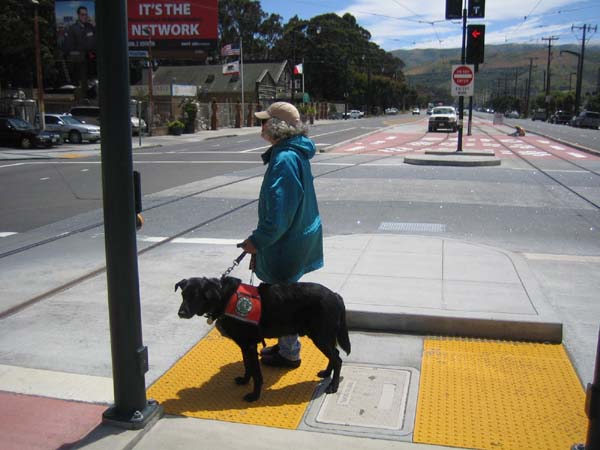 Tactile warnings alert this blind person crossing a mid-street island in San Francisco, USA. 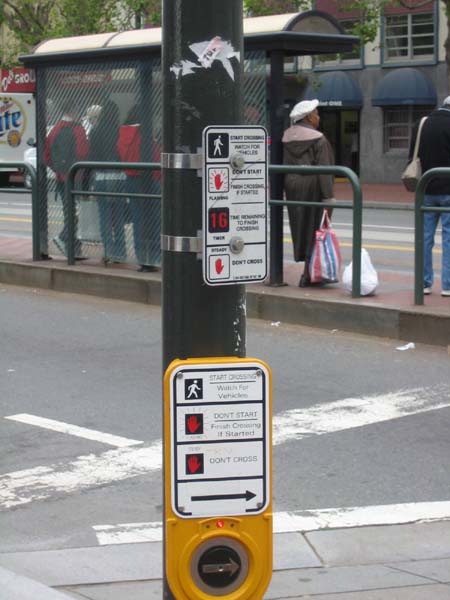 Busy intersections benefit from pedestrian controlled buttons and assist blind persons to cross through sound and vibration signals 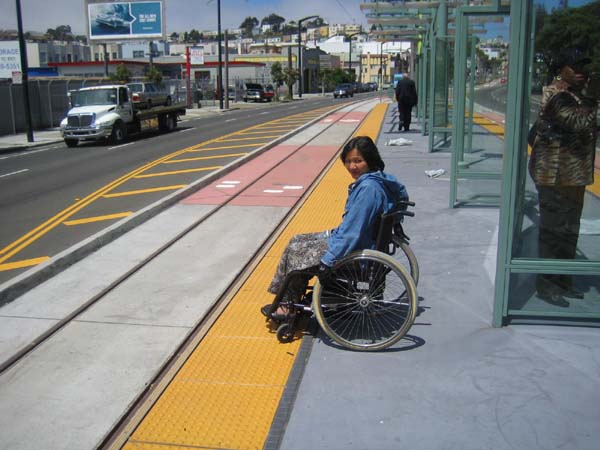 Tactile warnings protect blind persons – and all other passengers – from getting too close to the platform edge in transit stations. 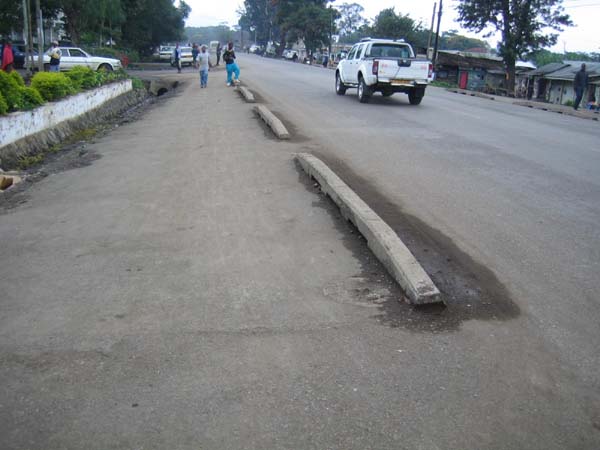 This footway adjacent to a road in Tanzania is protected by curb pieces which separate motor traffic from pedestrians and bicycles. Such basic safety measures are needed to prevent pedestrian injuries along roadways in many countries. 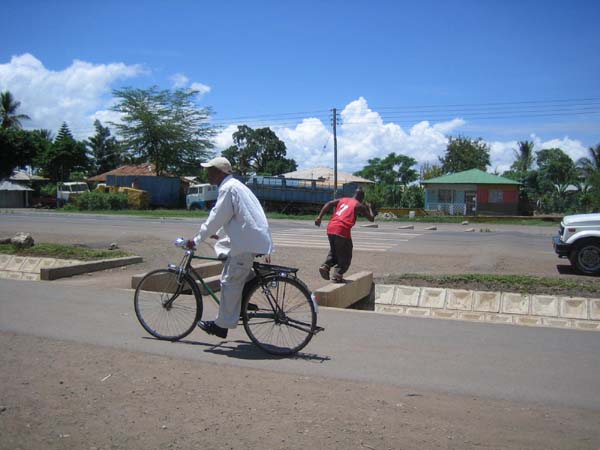 Even better, pedestrian and non-motorized traffic can be kept safely removed from motorized traffic by accessible sidewalks separated from the roadway, in this case by a well-designed drainage system along a main road in Tanzania. Speed bumps are used to slow traffic at crosswalks.  This pedestrian crosswalk provides level access to a bus island at an inter-modal transfer center in Mexico City.
Photo by T. Rickert, courtesy of DFID (UK) and TRL (UK). 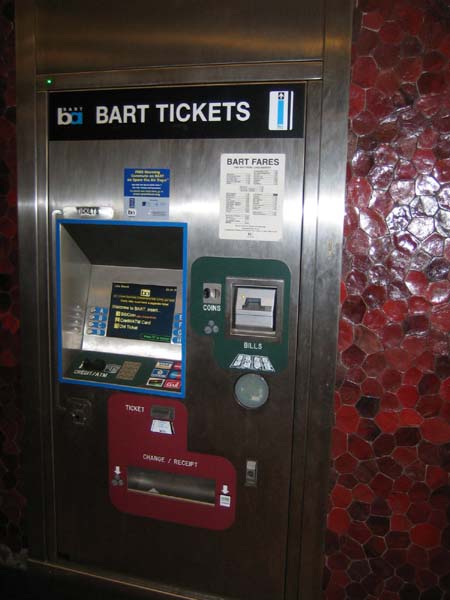 Ticket vending machines should be low enough for use by wheelchair users and all short persons, as illustrated by the good design of this machine at a BART station in the San Francisco Bay area, USA.  Stairs are often retrofitted with stair lifts in transit terminals, as here in a Tokyo subway station. However, in new construction, elevators should be considered where possible.  A wheelchair user takes the elevator from the platform level of the Shenzhen, China, railroad station.  Wide doors are needed to accommodate wheelchair riders entering fare-paid areas of transit terminals, as in this subway station in Rio de Janeiro. 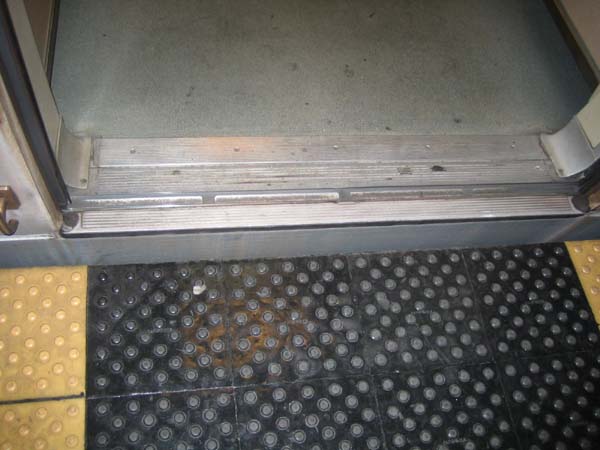 Everyone can safely board this BART train, due to a minimal horizontal and vertical gap. 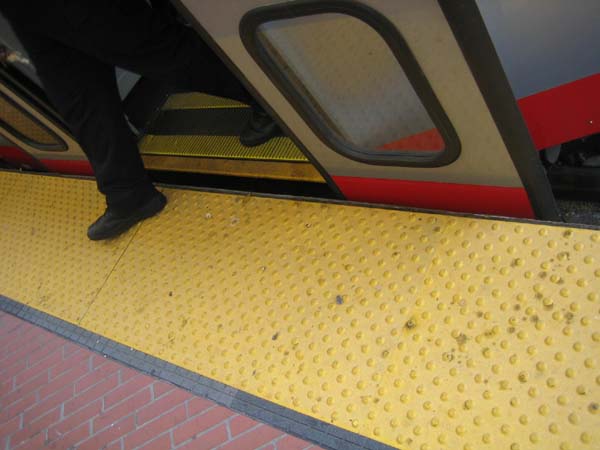 However, care must be taken that horizontal gaps are not too wide. The orange “gap filler” pops up when the doors open in San Francisco’s Muni Metro, assuring a safe gap.  Small portable ramps can provide inexpensive access in many rail stations, as shown here in Tokyo. 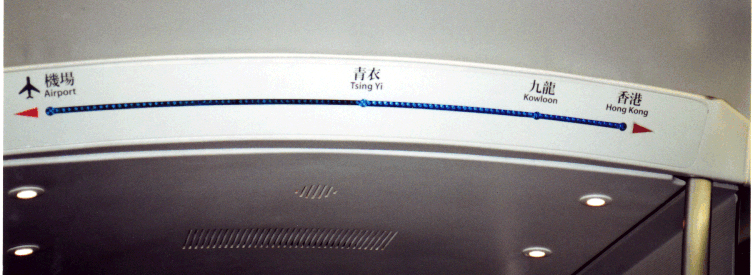 All passengers, and especially deaf and hard-of-hearing passengers, benefit from well-located visual information, as with this route display on board a train to the Hong Kong airport. 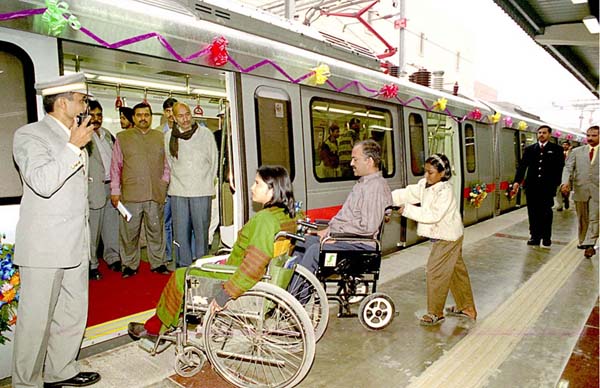 Advocates Anjlee Agarwal (left) and Sanjeev Sachdeva board the accessible Delhi Metro on its inaugural run.
Photo courtesy of Sanjay Sakaria and Samarthya, from Amar Ujjala Indian Daily  Express buses in Curitiba, Brazil, exemplify universal design. All passengers, including those with disabilities, quickly board with level entry. Similar Bus Rapid Transit (BRT) systems operate in Quito, Ecuador; Bogota, Colombia, and a growing number of cities around the world.
Photo by Charles Wright, Inter-American Development Bank. 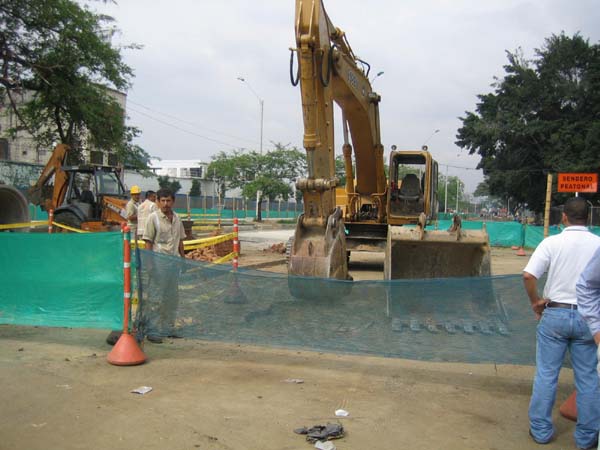 Construction of this Bus Rapid Transit (BRT) trunk line corridor in Pereira, Colombia, symbolizes the rapid spread of BRT systems around the world. BRT systems lend themselves to universal design, but details must be monitored carefully to maximize accessibility. 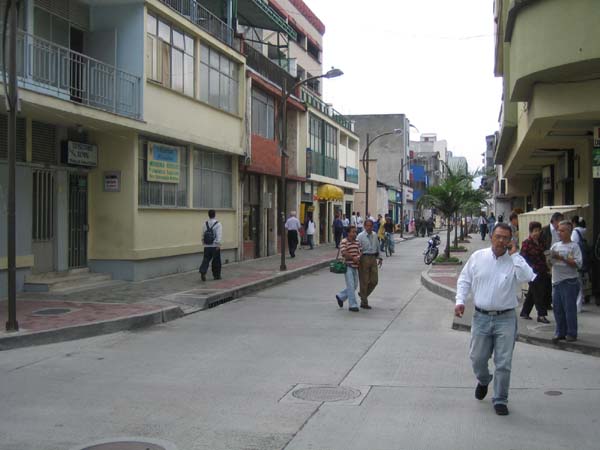 Although most BRT busways are on broad thoroughfares, this exclusive single-direction bus lane nearing completion in Pereira illustrates that BRT systems can sometimes be built on narrow streets.
This and above photo by T. Rickert courtesy of World Bank 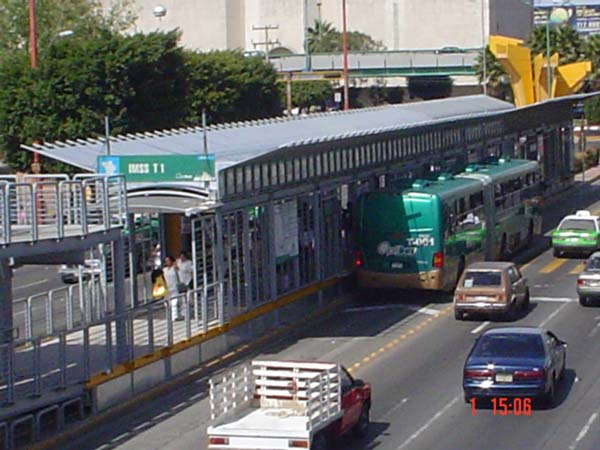 The photo shows an articulated bus docking at a Bus Rapid Transit station in León, Mexico. 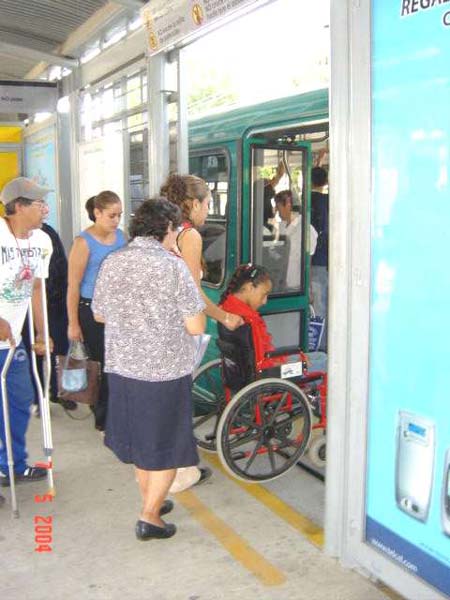 Pre-paid passengers inside a station board a high-capacity BRT bus in León.
This and above photo courtesy of Sistema Integrado de Transporte Masivo de León 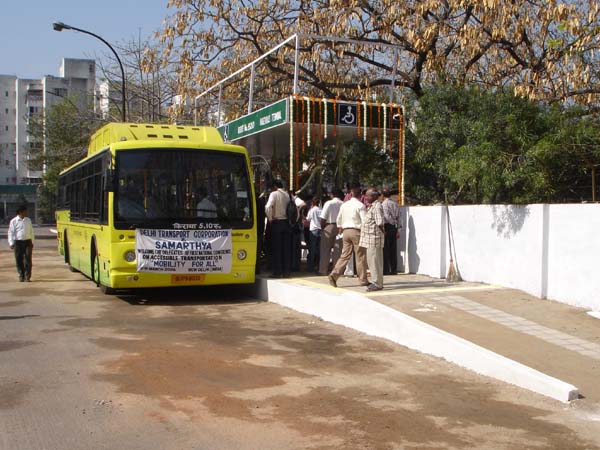 A prototype low-floor bus is tested in New Delhi adjacent to a platform the same height as the bus floor. 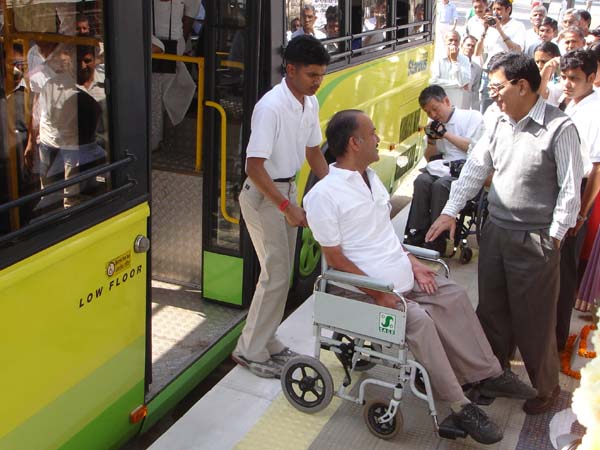 A closeup of the same bus stop illustrates the advantages of fast boarding for all passengers from platforms that eliminate the need for climbing steps to board.
This and above photo courtesy of Gerhard Menckhoff of the World Bank. 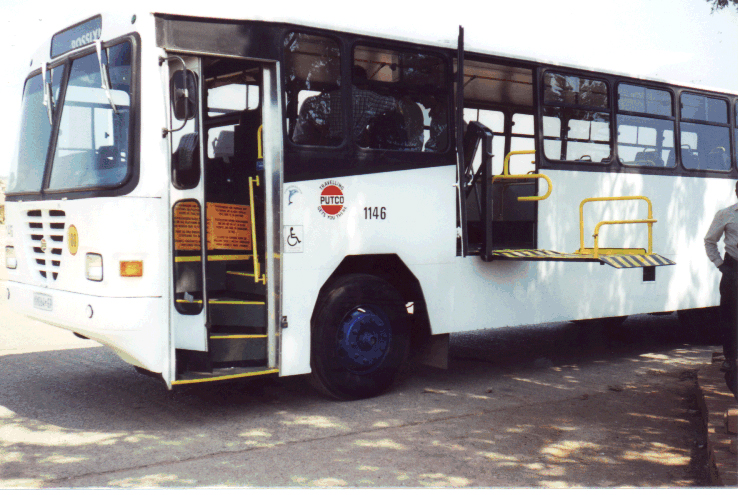 This prototype lift-equipped bus serves Mamelodi Township in South Africa. Note the excellent use of contrasting colors.
Photo by T. Rickert, courtesy of DFID (UK) and TRL (UK).  Mexico City officials inaugurated service in 2001 with 50 new buses equipped with lifts and other access features.
Photo courtesy of Marìa Eugenia Antunez.  In addition to a wheelchair lift, this bus in Mexico City has a retractable step beneath the front entrance.  This low-floor bus in Warsaw, Poland, uses an inexpensive hinged ramp which provides easy boarding for passengers with disabilities.  A low-floor bus in Hong Kong also exhibits excellent color contrast, using a bright yellow on key edges and surfaces. 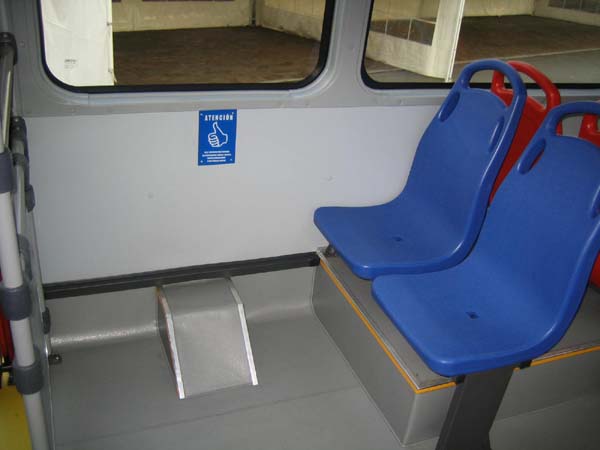 Transit systems around the world have reserved seating for seniors and passengers with disabilities, and often for pregnant women as well, as found on this TransMilenio bus in Bogotá, Colombia. 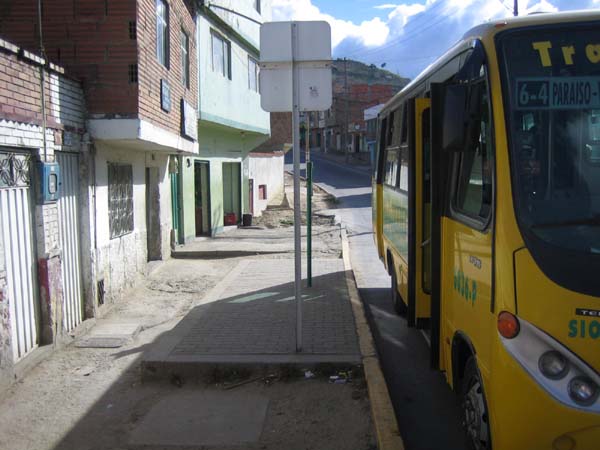 Even when bus stops are not accessible to wheelchair users, access for seniors and others with disabilities can be enhanced by a level all-weather pad even in the absence of paved sidewalks. The photo is from a TransMilenio feeder route in Bogotá.
This and above photo by T. Rickert courtesy of World Bank.  Thousands of Mexico City’s small inaccessible microbuses are being recycled and replaced with larger vehicles, often with better access features.  One such feature is this priority seating located behind the driver where there is extra leg room and it is easier for blind passengers to hear the driver call out key stops.
Photo by T. Rickert, courtesy of DFID (UK) and TRL (UK).  In other new buses in Mexico City, a wide rear door has low steps and is easily accessed by semi-ambulatory passengers from a raised sidewalk, but requires that drivers carefully pull in to the curb.
Photo by T. Rickert, courtesy of DFID (UK) and TRL (UK). 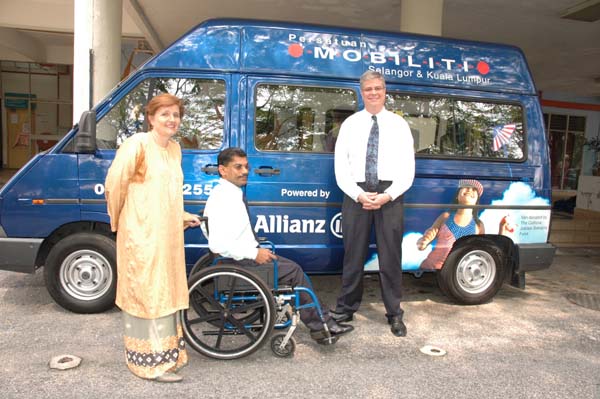 Community initiatives are playing a growing role in providing accessible door-to-door transport in many countries. This accessible van in Kuala Lumpur, Malaysia, belongs to the six-vehicle fleet of Persatuan Mobiliti.
Photo courtesy of Persatuan Mobiliti  Artist’s conception of a three-wheeled door-to-door vehicle connecting with an accessible ramped platform with bridge at a bus stop at a key site.  This prototype three-wheeled vehicle was built with AEI’s assistance by Kepha Motorbikes in Nairobi, Kenya.  Detail showing entry via a ramp at the rear of the test vehicle.
This and above photo courtesy of Wycliffe Kepha.  This accessible bicycle rickshaw in India has a rear door which serves as a ramp.
Photo courtesy of Bikash Bharati Welfare Society and Lalita Sen. 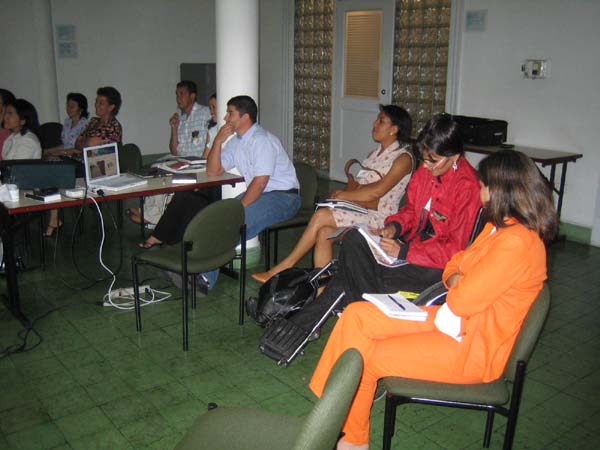 A public meeting in Cali, Colombia, discusses accessibility to Bus Rapid Transit systems. Readers can go to the Bus Rapid Transit Accessibility Guidelines in our Resources section, under the links to the World Bank.
Photo by T. Rickert, courtesy of the World Bank. 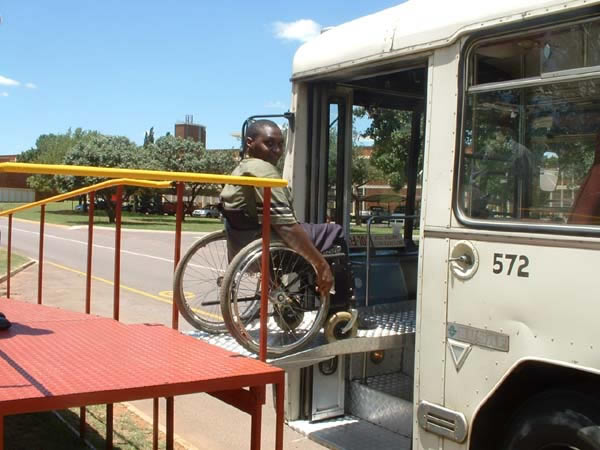 In this version, the bridge piece is mounted under the platform and put into place by the bus driver.
This and above photo courtesy of DFID (UK) and CSIR Transportek (South Africa). 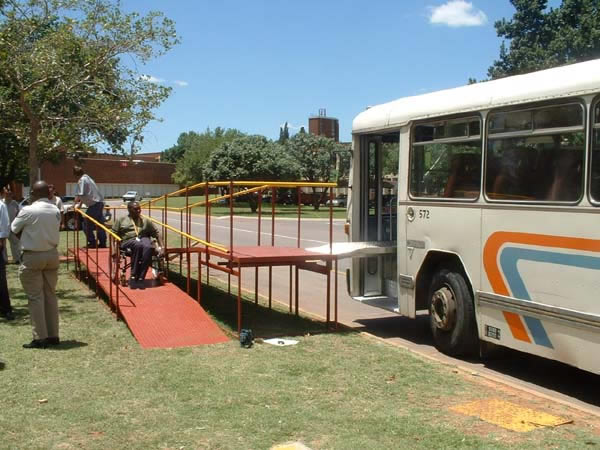 This test in South Africa of a prototype platform for use at key sites shows an alternative approach to access for wheelchair users.
|
|

.jpeg)
.jpg)
.JPG) Architect and Professor, Dr. Rachna Khare has lectured and published extensively on the subject of Inclusive Design worldwide. Her book, Designing Inclusive Educational Spaces for Autism (2010), was published by the Institute of Human Centered Design, Boston, USA . In addition, she is one of the authors of Universal Design India Principles (2011). She has also edited special issues of the internationally journals, SPANDREL on “Social Sustenance” in 2012, and ABACUS on “Architecture for All” in 2007.
Architect and Professor, Dr. Rachna Khare has lectured and published extensively on the subject of Inclusive Design worldwide. Her book, Designing Inclusive Educational Spaces for Autism (2010), was published by the Institute of Human Centered Design, Boston, USA . In addition, she is one of the authors of Universal Design India Principles (2011). She has also edited special issues of the internationally journals, SPANDREL on “Social Sustenance” in 2012, and ABACUS on “Architecture for All” in 2007..JPG)












































